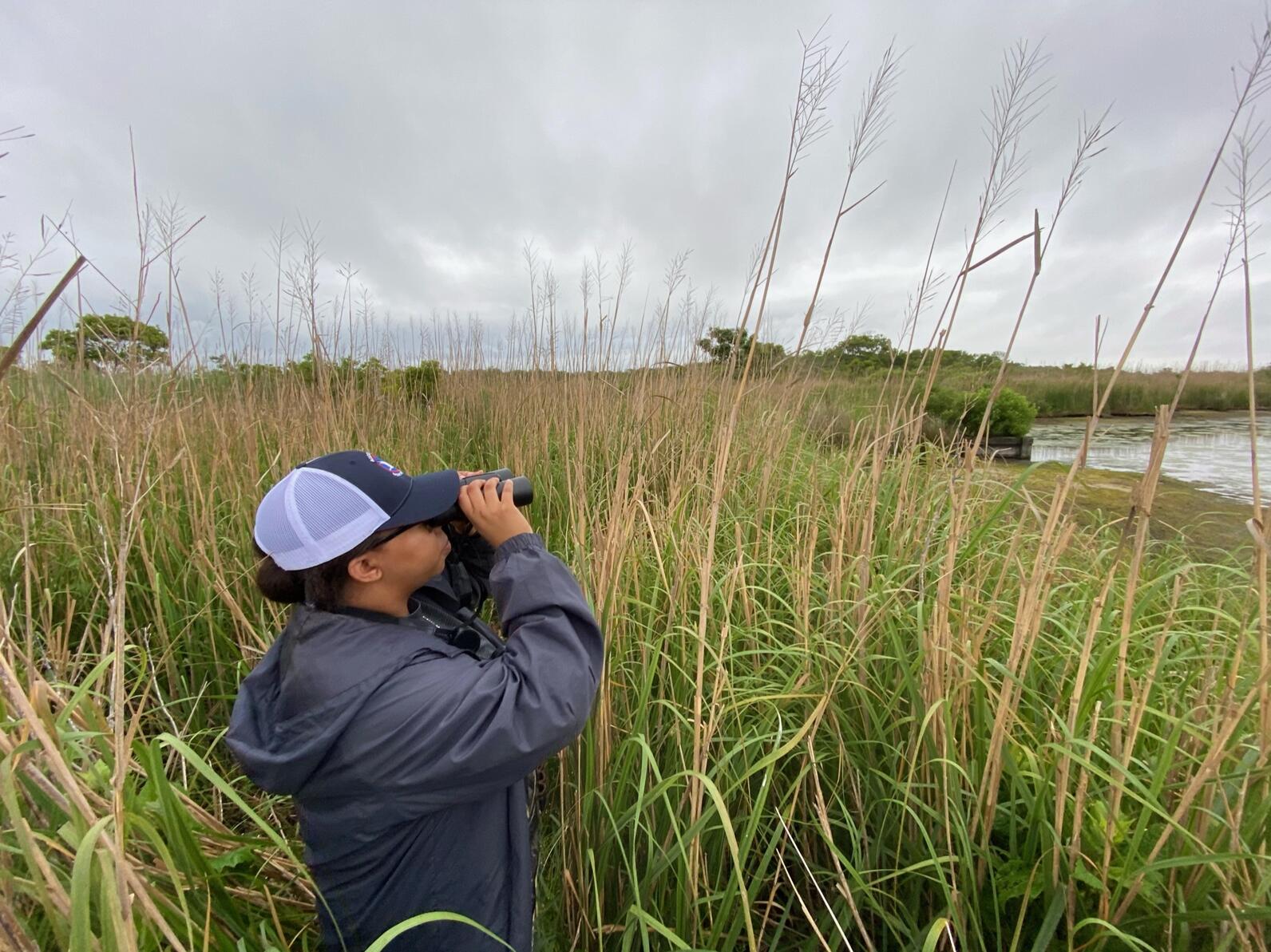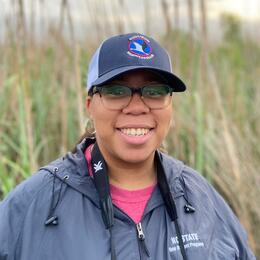When the sun rises on Currituck Sound, birdsong rings clearly over the marshes. But if you listen closely, you can hear muffled grunts, squawks and chuckles. These are the calls of a reclusive group of birds that spend their lives hidden below the tall marsh grass, known collectively as secretive marsh birds.
This spring, Audubon staff and volunteers headed deep into the marshes of our Pine Island Sanctuary on Currituck Sound to search for these birds, including the federally threatened Black Rail, a bird often described as quiet and furtive as a mouse.
By figuring out how the birds are faring—where they live and how many there are—we can better assess the status of the marsh.
“Secretive marsh birds depend on expansive, healthy marsh to survive,” says Curtis Smalling, Audubon’s Director of Conservation. “If we know what’s happening with the birds, we’ll have a better understanding of the health of the marsh and how we can protect and restore it for birds and the people who live along Currituck Sound.”
Life Below the Marsh
As a group, the marsh birds come in all shapes and sizes. Of the five species targeted in the survey, three are rails—the Black Rail, as well as the Virginia and King rail. The latter is a large-but-narrow bird that easily slips through tall grass, earning it the nickname "sneaky marsh chicken" among Audubon staff. The Least Bittern is a small heron-like bird that clings to reeds, while the Common Gallinule is more duck-like.
Finding these birds means getting out early. For the Audubon team, waking up before sunrise and coming in after dark became the new normal during the six weeks of the surveys this spring. “Many of the marsh birds are crepuscular, meaning they are most active at dawn and dusk,” says Cat Bowler, Audubon’s Coastal Resilience Program Manager. “That’s when they’re singing, which is the most consistent way to detect them.”
Staff hopped into boats or kayaks to get to remote corners of the marsh. For each survey, one person filled in a data sheet, while another held a recording device that played the calls of the target species.
Smalling organized the survey structure to be in line with protocols established by National Wildlife Refuge System, so the data collected by Audubon can feed into larger regional efforts to understand these birds.

Sounds of the Tall Grass
The first five minutes of each survey are spent in silence as staff listen to the sounds of the marsh. For the next five minutes, recordings of the target species blare from the speaker to see if a marsh bird will respond.
During one late-May survey, Audubon staff launched boats from the Pine Island docks. The water was calm but low, pushed by the wind-driven tides out of the marsh. That left the crew slogging through narrow channels and thick sea grass that reached to the water’s surface. As it turns out, humans, unlike sneaky marsh chickens, don't slip so easily through the marsh.
While the terrain provided some challenges, the journey was well worth it. A Least Bittern was spotted on the bank of a channel before zipping away into the tall cord grass. Shortly after, the call of a King Rail echoed over the waters.
At the end of the surveys, the team identified dozens of Least Bitterns and King Rails. But Black Rails lived up to their reputation—none were detected this spring. The bird has been in steep decline in North Carolina and across the Atlantic and Gulf coasts. Still, Smalling is hopeful that future surveys may turn up this tiny bird.
“We know what Black Rails need to thrive—shallow wetlands that allow them to nest and search for food, conditions most often found in extensive, undisturbed wetlands,” Smalling said. “We’re hopeful that future habitat work can help this bird make a comeback on Currituck Sound.”
Restoring Marshes for Birds and People
The Black Rail is the rarest of the target species, but all are facing troubles. By their very nature, secretive marsh birds are difficult to find, and it has only become more difficult as their populations have declined due to the widespread loss of wetlands. In Currituck Sound, erosion and rising seas are eating away 72 acres of marsh each year.
As habitat declines, Audubon and our partners are working to help protect what’s left through a series of restoration projects, aimed at helping birds and the people who live nearby.
“Healthy marshes help keep our waters clean,” Bowler says. “They also act as natural infrastructure, preventing flooding and erosion from reaching the mainland, all while absorbing carbon from the atmosphere.”
Restoring Currituck Sound’s marshes can set the stage for conservation work across the North Carolina coast. Strategies that work here can also be shared with other states facing habitat loss through Audubon’s national network of staff, volunteers, and partners.
Secretive Marsh birds are hard to find, but they shouldn’t be impossible. By taking action now, we can ensure the marshes of Pine Island continue to ring loudly with songs of rails, bitterns and all secretive marsh birds.









